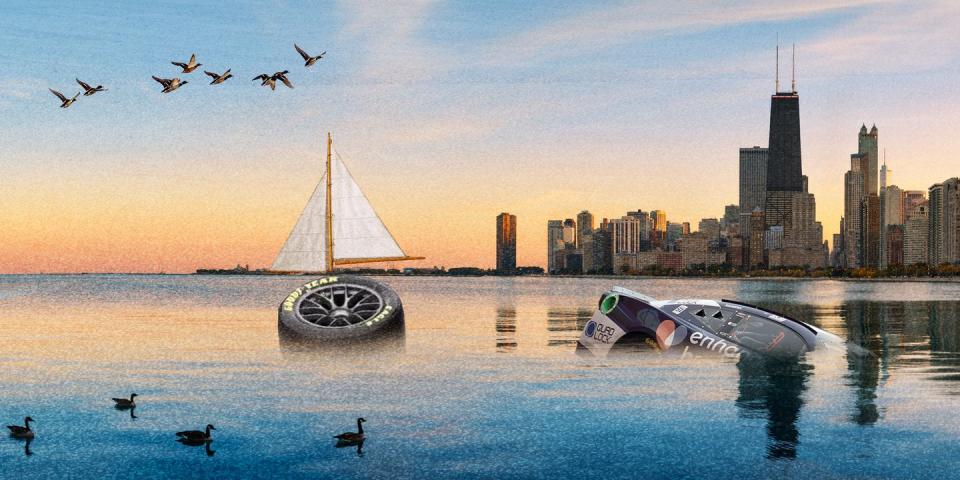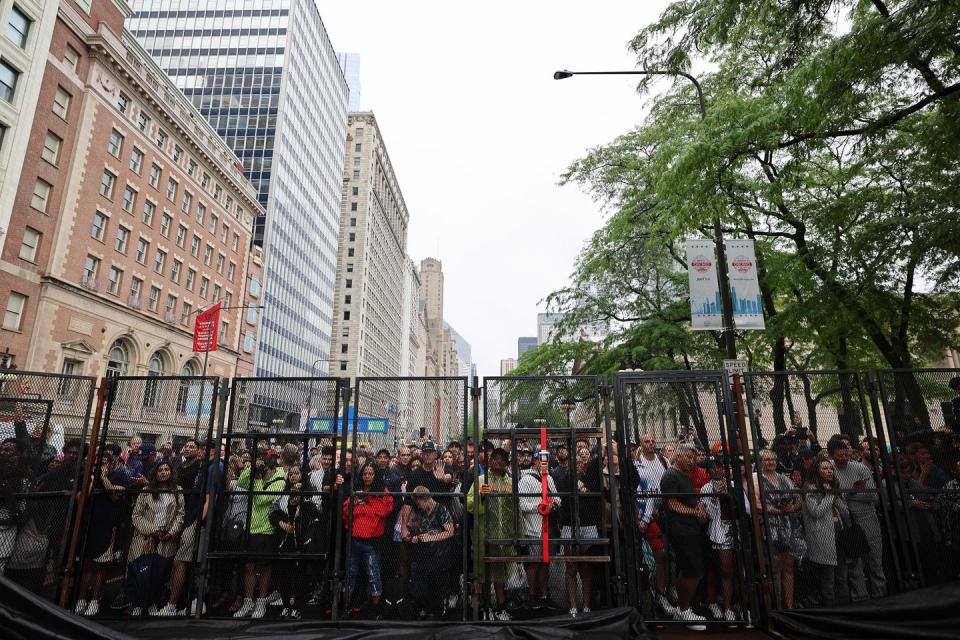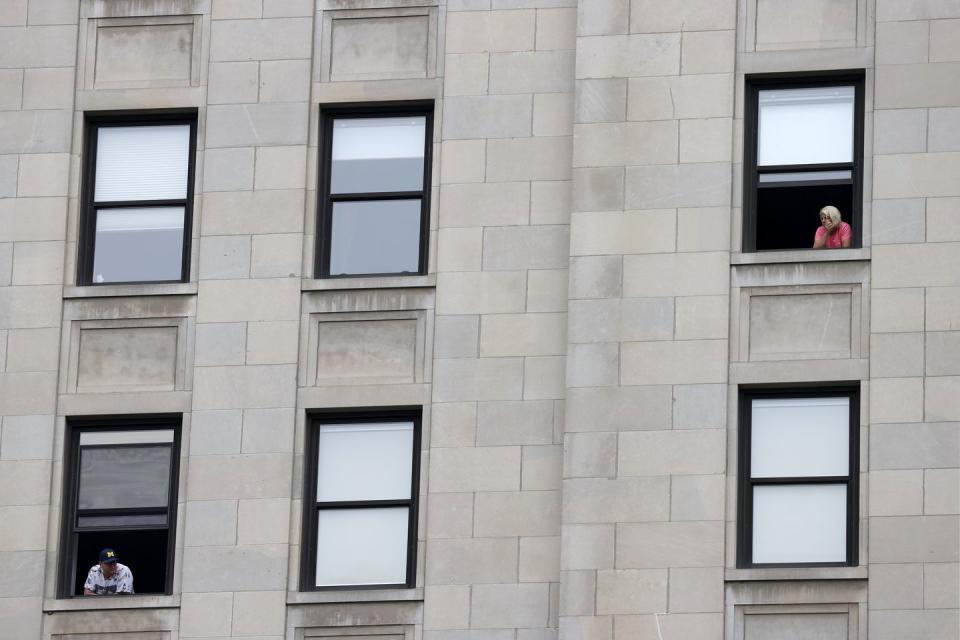NASCAR Needed Its Chicago Street Race to be a Success. Then Came the Flood.

Ross Chastain was awed by skyscrapers.
Addressing the NASCAR press corps Saturday at the Art Institute of Chicago, the Trackhouse Racing driver and recent winner of the Ally 400 said what we’d all been thinking: “It’s a little different than Nashville, that’s for sure…For me it's a bit different than Alva, Florida, too.”
He looked out the window nervously.
“You can't see the sky. It's only buildings. I see a couple trees and from my point of view right now. I'm not used to that. I'm used to wide open farm fields and two lane roads in South Florida. When I strap in, I'm probably not gonna see much of the sky. It's gonna be buildings and, and walls and fences and, and tight confines.”
Chastain, a spicy, dynamic driver and the heir to a watermelon-farming family off Florida’s Gulf Coast, was right to be anxious. His anxiety was reflected everywhere the race touched, from the drivers, to the city government, to NASCAR itself, to fans, to the people who live in Chicago and commute downtown, their day woefully disrupted. I think it’s fair to call the Chicago Street Race, which took place Saturday July 1st through Sunday July 3rd, an experiment. A big, risky experiment.
For NASCAR, a lot was riding on this event going smoothly. The Street Race represents a bold new strategy, one that pulls from F1 courses like Monaco, capitalizing on a sport which is seeing a boom of popularity. It takes NASCAR, long considered a staple of the South (with all the cultural and political baggage wherein) and introduces it to a completely new, younger, and much more diverse audience. The diversity angle, namely the outreach toward Chicago’s Black community on the South Side was particularly emphasized by NASCAR’s community engagement events – for example, Bubba’s Block Party at the DuSable Museum of African American History. The message is clear: if the sport is to survive in the modern cultural consciousness, it needs to branch out, and fast.

Pulling from F1 is probably a good place to start. Jenson Button, 2009 F1 champion-cum-NASCAR driver, would know better than most. “I can only think of positives,” he said in the press conference. “We're trying something new…I know from previous experiences, street races for the teams, for the drivers, it's all a big learning curve.” For Button, Chicago is just the beginning. “I want to see racing in Europe. I think the European fans are very on board with NASCAR at the moment, especially after the performance that we had at Le Mans. They're new fans and I think that's one thing about racing in the streets here.”
That’s the drivers’ side of the story. For Chicago, the situation is more complicated.
The NASCAR Street Race was a project of the outgoing mayor, Lori Lightfoot, and since its inception has been criticized by community activists and transportation advocates around the city.
“We were deeply concerned about the lack of transparency here. And transit seemed like an afterthought. Safety seemed like an afterthought,” said David Powe, who works at the Active Transportation Alliance, a transit nonprofit. “The economy and tourism should never come before human safety, air quality and the equity concerns of making sure that people using the bus can get to where they're trying to get to healthcare, get to school, get to their medical appointments, get to a grocery store. We're just deeply concerned about the previous administration's push to get this approved and scheduled.”
“Chicagoans have been calling for better access to our public parks, whether that's Riis Park or Grant Park, Millennium Park or the Lakefront Trail. And [instead] we've just been giving more and more of our public space away to corporations. This is just another one of those examples,” said Rony Islam, an organizer with Chicago Bike Grid Now!

“NASCAR talks a lot about like, oh, I'm doing community outreach, and they've got like a section of their setup that's open to the public or whatever. But it's not really open to the public and it's not open to all Chicagoans. And when you look at their ticket prices, for example, oh yeah. It's very clear that it's not open to all Chicagoans.”
Islam has a point. At $269 and up, the tickets, in fact, do not come cheap. Even for NASCAR, they’re deeply expensive, and the organization hoped that by combining the race with a kind of half music festival – acts like The Black Crows and the Chainsmokers were to perform – would justify the cost of entry. If NASCAR wants to reach out to a more diverse fanbase, $269 is a little high if you’re a college student or working a 9-to-5.
Regardless of the lack of transparency, the turning of Grant Park into a fortress, and the high costs, the event would go on regardless. The big experiment was on.
Then the flood came.

 Yahoo Autos
Yahoo Autos 